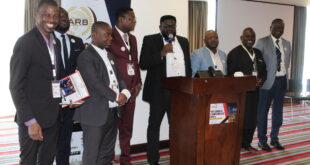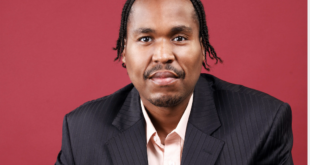


leads at the start

Kyalami Grand Prix Circuit, 14 March 1993. It’s the opening race of the 1993 Formula 1 World Championship. It is just the second year since F1 has begun to race again in South Africa, after the series withdrew from South Africa in 1985, due to apartheid.
There was no Nigel Mansell, as despite winning the South African Grand Prix and the drivers championship in 1992, the British driver had left F1 to race in IndyCar. This meant there was no defending champion on the grid, for the first time since 1974.
Despite this, the race was not without excitement, as it saw some of the motorsport’s most famous drivers, including the likes of Prost, Senna and Schumacher face off in front of an expectant Johannesburg crowd.
The Grand Prix proved to be full of drama, as only seven drivers were awarded a final classification, with the rest of the grid retiring at various points throughout the race. Of the seven that finished, only the top two drivers completed the entire 72 laps. When the chequered flag fell, victory was awarded to Williams’ Alain Prost. Completing the podium was his former teammate Ayrton Senna and Ligier’s Mark Blundell.
However, despite the exciting on-track action, this would prove to be the final time F1 ever raced on South African shores. It would also mark the start of a 30-year period, until Formula E raced in Cape Town in 2023, that South African motorsport fans would be unable to attend an FIA single-seater world championship event in the country.
Ultimately, the extreme cost of hosting a Grand Prix prevented F1 returning to Kyalami in the following seasons. The track was sold in 1993, and the new owners were unable to host a Formula 1 race at a profit, so the South African Grand Prix was scrapped. This decision to withdraw South Africa from the calendar brought an end to an iconic period of racing in South Africa that began in 1934 in East London in the Eastern Cape.
The first South African Grand Prix (not F1 World Championship), was hosted at East London’s Prince George Circuit in 1934. The circuit was initially a street race through parts of East London, but a more permanent track was built after the Second World War.
The new track opened in 1959, and kept the name of its predecessor, and would be the site for the first-ever Formula 1 World Championship race to take place in South Africa. This meant that drivers would earn points by competing in the race, which would affect their rankings in the official F1 championship.
The race took place in December 1962 and was won by two-time F1 world champion Graham Hill, who in the process would claim his first F1 title. East London would play host to three more F1 races in the following years before the location was shifted to the Kyalami Grand Prix Circuit in 1967.
Kyalami, which was built in 1961, became the official location of the South African Grand Prix until it fell off the calendar, first in 1986 and later in 1994.
As international pressure and sanctions on South Africa began to mount in the 1980s, due to apartheid policies, South Africa’s place on the F1 calendar was quickly becoming untenable. In 1985, which was the same year the apartheid regime declared a state of emergency, some teams began to boycott F1 racing in the country.
French teams Renault and Ligier did not participate in the 1985 South African Grand Prix, due to the French government’s ban on all sporting events in the country. However, French drivers Alain Prost and Phillipe Streiff, who both drove for British teams attended the race, despite their government’s opposition.
1985 proved to be the end of F1’s involvement with apartheid South Africa, as just days after the race, the FIA announced that F1 would not return to the country. The FIA president Jean-Marie Balestre cited apartheid as the reason for the sport’s withdrawal.
The sport briefly returned for two seasons, in 1992 and 1993, after international sanctions against the government were lifted. However, due to the significant financial cost of hosting a Grand Prix, South Africa was unable to keep its place on the F1 calendar, leaving fans without a single-seater world championship race for 30 years.
While there was no on-track action for fans to enjoy, talks began behind the scenes to bring a world championship race back to South Africa. This finally culminated in the 2023 Formula E Cape Town E-Prix, taking place on the iconic streets of Green Point.
The race, hosted on 25 February 2023, proved to be a fan favourite, with the grandstands selling out ahead of the race. The on-track action did not disappoint, with Antonio Felix da Costa taking his only win of the season, ahead of Jean-Éric Vergne in second, and Nick Cassidy in third.
Speaking on how important having a world championship event in South Africa is, South African-born Jaguar TCS team principal James Barclay said, “World championships are different because they mean so much more. It is also very important to bring world championship motorsport to South Africa because it is a way of inspiring future generations about what they can do, and what they’re fully capable of doing.”
Barclay believes that to create a meaningful, and long-lasting impact in the country, the championship needs to make South Africa a regular destination on the calendar.
“Coming back once is one thing, but you want to come back for five to ten years. I think that will change the industry in South Africa because when you have international motorsport with international teams, with international drivers, it will help build the motorsport industry, which has a really proud history in South Africa.”
Plans to bring back the world’s most sustainable motorsport, which created a significant boost to the local and national economy, are already underway.
According to Iain Banner, chairman and founder of e-Movement, the local promoters of the Cape Town E-Prix, “After the enormous success of the Cape Town E-Prix in 2023, we are firmly committed to bringing this world championship event back to our shores.
Motorsport is going through a difficult time in South Africa as we transition to the digital age. Fans now have so many platforms they can consume content on and live viewing is currently sadly on the least favourite platforms.
In a fast-paced world of instant gratification, it is clear that we need to provide fans with amazing racing and a whole lot more, and Formula E fills this requirement. The 2023 Cape Town E Prix was an experiential event filled with exhilarating racing hosted at world-class facilities, offering the best of the best to race going fans. We are working hard to ensure that we can bring back this event in the future, to ensure that South African motorsport fans are exposed to world-class racing on their doorsteps.”
If you want to catch the next round of the Formula E season, in anticipation of its potential return to the Mother City in 2025, you can catch all the action on ETV and SuperSport, or on the Formula E app. The electrifying racing will resume in São Paulo on 16 March, for round four of the Formula E World Championship.
 ..:: AUTO REPORT AFRICA ::..
..:: AUTO REPORT AFRICA ::..




